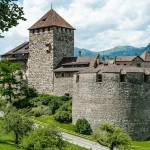
10 Tips for an Epic Trans-Siberian Railway Adventure

Embarking on an Epic Adventure: My Trans-Siberian Railway Journey
The Trans-Siberian Railway is one of the most iconic train journeys in the world. Stretching over 9,000 kilometers from Moscow to Vladivostok, it is the longest railway line in the world and offers travelers a unique opportunity to explore the vast and diverse landscapes of Russia. This blog post will serve as a comprehensive guide to planning and experiencing the Trans-Siberian Railway adventure. Whether you are a seasoned traveler or a first-time explorer, this article will provide you with all the information you need to make the most of your journey.
Planning Your Trans-Siberian Railway Adventure: Tips and Tricks
Before embarking on your Trans-Siberian Railway adventure, there are several important factors to consider. The best time to travel along the route is during the summer months of June to August when the weather is mild and the days are long. However, if you prefer to avoid crowds, consider traveling in the shoulder seasons of May or September.
Choosing the right train is crucial for a comfortable and enjoyable journey. There are several options available, ranging from budget-friendly options to luxurious trains with private cabins and gourmet dining. Research different trains and their amenities to find one that suits your preferences and budget.
Booking tickets for the Trans-Siberian Railway can be done online or through travel agencies. It is advisable to book well in advance, especially during peak travel seasons. Additionally, make sure to check visa requirements for Russia and allow enough time for visa processing.
When packing for your journey, it is important to pack light but also be prepared for different weather conditions. Layered clothing is recommended as temperatures can vary throughout the journey. Don’t forget essentials such as comfortable shoes, a good travel pillow, and a universal power adapter.
From Moscow to Vladivostok: A Journey Across Russia
The Trans-Siberian Railway route takes travelers from Moscow in the west to Vladivostok in the east, passing through several major cities and breathtaking landscapes along the way. The journey typically takes around 7 to 14 days, depending on the stops and duration of stay at each destination.
Some of the popular stops along the route include Yekaterinburg, Irkutsk, and Lake Baikal. Yekaterinburg is known for its rich history and is the place where the last Russian Tsar, Nicholas II, and his family were executed. Irkutsk is a gateway to Lake Baikal, the deepest freshwater lake in the world. Lake Baikal is a natural wonder with crystal-clear waters and stunning scenery.
Throughout the journey, travelers will be treated to breathtaking views of Russia’s diverse landscapes. From the rolling hills of the Ural Mountains to the vast Siberian taiga, there is no shortage of natural beauty to admire.
The Ultimate Train Experience: What to Expect on the Trans-Siberian Railway
The Trans-Siberian Railway offers a variety of train options to suit different budgets and preferences. The most common types of trains are the regular trains, which have basic amenities and are more affordable. There are also luxury trains such as the Golden Eagle and Tsar’s Gold, which offer private cabins, gourmet dining, and onboard entertainment.
Accommodations on the train range from simple seats to private cabins with beds. It is advisable to book a private cabin for a more comfortable journey, especially for longer trips. Cabins typically have two or four beds and may have shared or private bathrooms.
Onboard amenities vary depending on the train, but most trains have dining cars where passengers can enjoy meals and socialize with fellow travelers. Some trains also have lounges, bars, and observation cars where passengers can relax and take in the scenery.
Entertainment options on the train include reading materials, board games, and sometimes even live performances by local musicians. Many trains also offer language classes and cultural lectures to enhance the travel experience.
Exploring Russian Culture and History Along the Way
One of the highlights of the Trans-Siberian Railway journey is the opportunity to explore Russian culture and history at various stops along the route. From historical landmarks to museums and art galleries, there is no shortage of cultural experiences to be had.
In Moscow, visit the iconic Red Square and the Kremlin, which houses several museums and historical buildings. Yekaterinburg is home to the Church on the Blood, built on the site where the last Russian Tsar and his family were executed. Irkutsk is known for its well-preserved wooden architecture and is a gateway to Lake Baikal.
Throughout the journey, travelers will have the chance to immerse themselves in local customs and traditions. From trying traditional Russian cuisine to participating in local festivals and events, there are plenty of opportunities for cultural exchange.
Meeting Locals and Making Friends on the Train
The Trans-Siberian Railway is not just a means of transportation; it is also a social experience. One of the best ways to make the most of your journey is to interact with fellow passengers and locals along the way.
Tips for socializing on the train include being open and friendly, learning a few basic Russian phrases, and offering small gifts or treats to fellow passengers. It is also important to be respectful of cultural differences and customs.
Language barriers can be a challenge, as English may not be widely spoken in some areas. However, with a little effort and patience, it is possible to communicate and make meaningful connections with locals.
Cultural exchange is an important part of any travel experience, and the Trans-Siberian Railway offers ample opportunities for this. Whether it’s sharing stories, learning about local customs, or simply enjoying a meal together, these interactions can enrich your journey and create lasting memories.
The Best Stops Along the Trans-Siberian Railway Route
While the entire Trans-Siberian Railway route is filled with fascinating destinations, there are a few stops that are particularly worth visiting.
Moscow, the starting point of the journey, is a vibrant and bustling city with a rich history and cultural heritage. Visit the iconic Red Square, explore the Kremlin, and immerse yourself in the city’s vibrant arts and music scene.
Yekaterinburg is another must-visit destination, known for its historical significance and unique architecture. Visit the Church on the Blood, which stands on the site where the last Russian Tsar and his family were executed. Explore the city’s museums and art galleries to learn more about its rich history.
Irkutsk is a gateway to Lake Baikal, one of the most beautiful natural wonders in Russia. Take a boat trip on the lake, hike along its scenic trails, or simply relax on its pristine beaches. Irkutsk itself is also worth exploring, with its well-preserved wooden architecture and charming streets.
Finally, Vladivostok marks the end of the Trans-Siberian Railway journey. This vibrant port city offers stunning views of the Pacific Ocean and is known for its unique blend of Russian and Asian cultures. Explore its historic buildings, visit its museums, and enjoy fresh seafood at one of its many restaurants.
The Foodie’s Guide to the Trans-Siberian Railway: What to Eat and Drink
Russian cuisine is hearty and flavorful, with a wide variety of dishes to try along the Trans-Siberian Railway route. From traditional Russian classics to local specialties, there is something to satisfy every palate.
Some traditional Russian dishes to try include borscht (beet soup), pelmeni (dumplings), and blini (thin pancakes). These dishes are often served with sour cream or smetana and can be found in many restaurants and cafes along the route.
Each region along the Trans-Siberian Railway has its own unique culinary traditions. In Yekaterinburg, try the local specialty of pelmeni, which are dumplings filled with meat or vegetables. In Irkutsk, sample the local fish dishes, such as omul, a type of salmon found in Lake Baikal.
Dining options on the train vary depending on the type of train and class of accommodation. Some trains have dining cars where passengers can enjoy meals prepared by onboard chefs. Others may offer meal service directly to the cabins. It is advisable to bring some snacks and drinks for the journey, especially for longer trips.
Packing for the Trans-Siberian Railway: Essentials and Luxuries
When packing for the Trans-Siberian Railway journey, it is important to strike a balance between essentials and luxuries. Here are some recommendations for what to pack:
– Clothing: Pack layered clothing to accommodate different weather conditions. Include a mix of lightweight and warm clothing, as temperatures can vary throughout the journey. Don’t forget a good pair of walking shoes and a waterproof jacket.
– Toiletries and personal items: Bring travel-sized toiletries and personal items such as toothbrush, toothpaste, and shampoo. It is also advisable to bring a small first aid kit with essentials such as band-aids, pain relievers, and any necessary prescription medications.
– Entertainment options: The journey can be long, so it’s a good idea to bring some entertainment options such as books, magazines, or a tablet with movies or TV shows downloaded. Don’t forget chargers and a universal power adapter.
– Snacks and drinks: While meals are provided on the train, it’s always a good idea to have some snacks and drinks on hand. Pack some non-perishable snacks such as granola bars or nuts, as well as a refillable water bottle.
Safety and Security Tips for Your Trans-Siberian Railway Journey
While the Trans-Siberian Railway is generally a safe mode of transportation, it is important to take precautions to ensure a smooth and secure journey.
Staying safe on the train involves keeping your belongings secure and being aware of your surroundings. Keep your valuables with you at all times and lock your cabin when you are not inside. Avoid displaying expensive items or large amounts of cash.
Scams and theft can occur in crowded areas, so be vigilant and avoid engaging with suspicious individuals. It is also advisable to keep emergency contacts handy, including the contact information for the train conductor and local authorities.
Reflections on an Epic Adventure: Lessons Learned from the Trans-Siberian Railway
The Trans-Siberian Railway journey is not just a physical journey across Russia; it is also a journey of self-discovery and cultural understanding. Throughout the adventure, travelers will have the opportunity to learn about different cultures, meet new people, and challenge their own preconceptions.
Personal experiences and insights gained from the journey can be invaluable in shaping future travel experiences. From learning to navigate language barriers to adapting to different customs and traditions, these lessons can enhance future travel experiences and foster a greater appreciation for cultural diversity.
Travel tips for future adventurers include being open-minded, embracing new experiences, and being respectful of local customs and traditions. The Trans-Siberian Railway journey is a once-in-a-lifetime experience that will leave a lasting impact on those who embark on it.
Conclusion
The Trans-Siberian Railway is a truly epic adventure that offers travelers the opportunity to explore the vast landscapes of Russia, immerse themselves in its rich culture and history, and make lifelong memories. From planning the journey to experiencing life on the train, there are countless opportunities for adventure and discovery along the way.
Whether you are a seasoned traveler or a first-time explorer, the Trans-Siberian Railway journey is an experience like no other. So, pack your bags, hop on board, and get ready for the adventure of a lifetime.
If you’re planning a Trans-Siberian Railway journey, you might also be interested in exploring the wonders of Sweden. From its picturesque landscapes to its vibrant cities, Sweden offers a unique travel experience. Check out this article on Destination Mate, “Exploring Wonders of Sweden,” to discover the top attractions and hidden gems this Scandinavian country has to offer. Whether you’re interested in exploring Stockholm’s historic sites or immersing yourself in the stunning natural beauty of the Swedish countryside, this guide will help you plan an unforgettable adventure. Read more
Outline
1. Introduction
- Overview of the Trans-Siberian Railway as a world-renowned train journey
- The significance of the railway in terms of length and travel experience
2. Planning Your Trans-Siberian Railway Adventure: Tips and Tricks
- Best time to travel (summer months, shoulder seasons)
- Choosing the right train (budget-friendly to luxurious options)
- Booking tickets (online or through travel agencies)
- Visa requirements for Russia
- Packing tips (light packing, preparing for weather variations)
3. From Moscow to Vladivostok: A Journey Across Russia
- Route description (Moscow to Vladivostok)
- Duration of the journey
- Key stops along the route (Yekaterinburg, Irkutsk, Lake Baikal)
- Landscapes and scenic views (Ural Mountains, Siberian taiga)
4. The Ultimate Train Experience: What to Expect on the Trans-Siberian Railway
- Types of trains (regular to luxury options)
- Accommodations (seats to private cabins)
- Onboard amenities (dining cars, lounges, observation cars)
- Entertainment options (reading materials, games, cultural lectures)
5. Exploring Russian Culture and History Along the Way
- Cultural experiences at various stops (historical landmarks, museums)
- Highlights in Moscow, Yekaterinburg, and Irkutsk
- Opportunities for cultural exchange
6. Meeting Locals and Making Friends on the Train
- Socializing tips (openness, basic Russian phrases, respect for customs)
- Overcoming language barriers
- Cultural exchange experiences
7. The Best Stops Along the Trans-Siberian Railway Route
- Must-visit destinations (Moscow, Yekaterinburg, Irkutsk, Vladivostok)
- Unique attractions and activities at each stop
8. The Foodie's Guide to the Trans-Siberian Railway: What to Eat and Drink
- Overview of Russian cuisine
- Regional specialties (pelmeni, omul)
- Dining options on the train
9. Packing for the Trans-Siberian Railway: Essentials and Luxuries
- Recommended clothing and toiletries
- Suggestions for entertainment and snacks
- Packing essentials for different weather conditions
10. Safety and Security Tips for Your Trans-Siberian Railway Journey
- Keeping belongings secure
- Avoiding scams and theft
- Emergency contact information
11. Reflections on an Epic Adventure: Lessons Learned from the Trans-Siberian Railway
- Personal growth and insights from the journey
- Tips for future travelers
- Embracing cultural diversity
12. Conclusion
- Recap of the Trans-Siberian Railway as an unparalleled travel experience
- Encouragement for readers to embark on this adventure
13. Additional Information
- Exploration of Sweden as a potential next destination
- Highlights of Swedish attractions and travel tips
Frequently Asked Questions
- Is Trans-Siberian Travel Safe? Yes, it is generally safe, with few reported problems on stops or trains.
- Will My Phone Work on the Journey? Good reception is available along most of the route; local SIM cards are recommended for cost-effective data use.
- How Much Money Should I Bring? Additional expenses include meals, drinks, souvenirs, and entrance fees. Costs vary by country.
- Do Trains Have Plugs for Recharging? Yes, but sharing may be required in cabins with multiple berths.
- Is There WiFi in Hotels and On Trains? Hotels and cafes typically have internet access; WiFi is becoming more common on newer train models in Russia.
- What Currency Should I Bring? A mix of credit/debit cards and a small amount of cash in USD or Euros is recommended.
- What Is the Difference Between First and Second Class? First class offers 2-berth cabins for more privacy, while second class has 4-berth cabins and is more social.
- Can Tailor-Made Tours be Organized? Yes, itineraries can be customized to individual requirements.
Recent Posts


Exploring the Enchanting Beauty of Kerala: A Journey Through India’s Tropical Paradise
